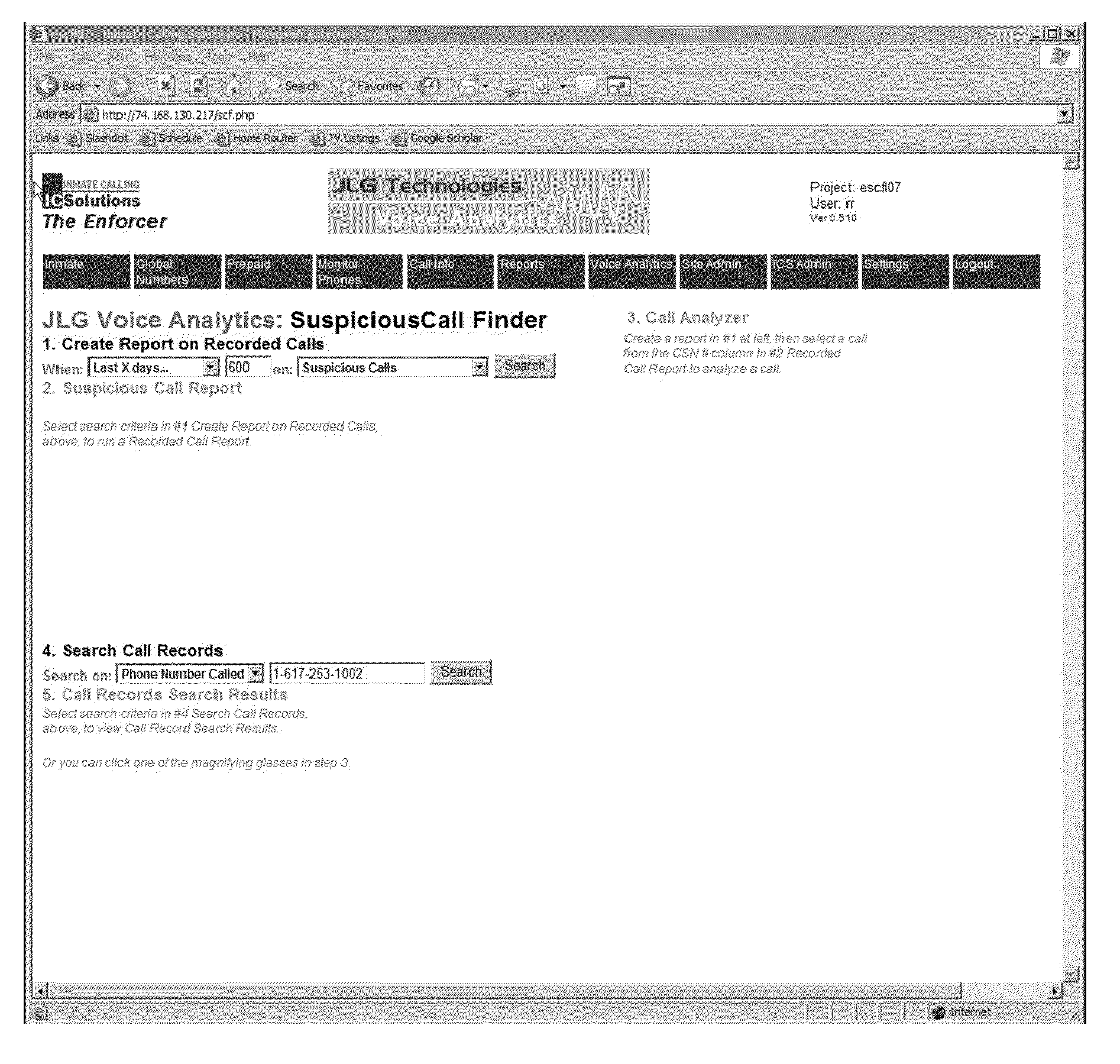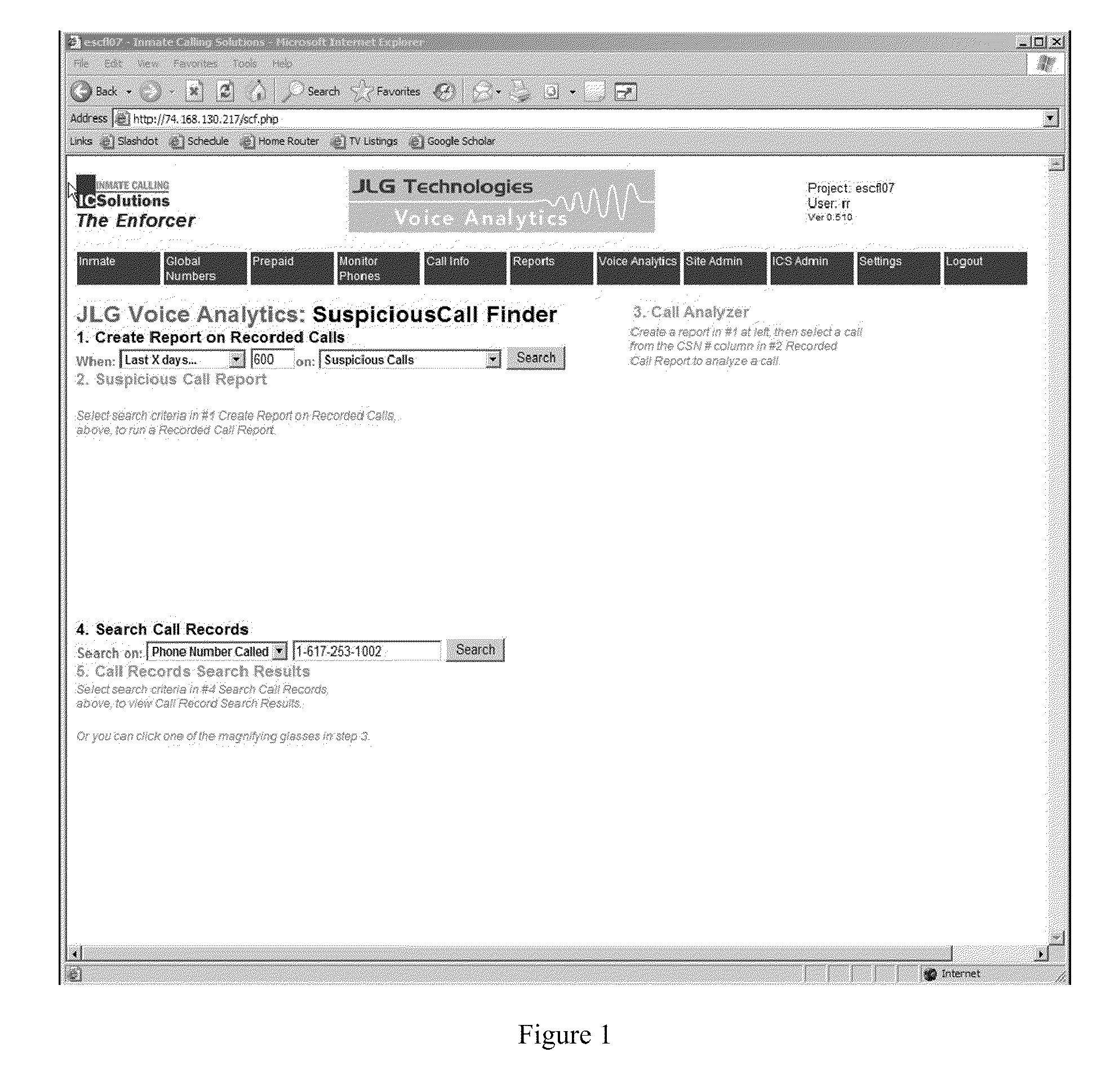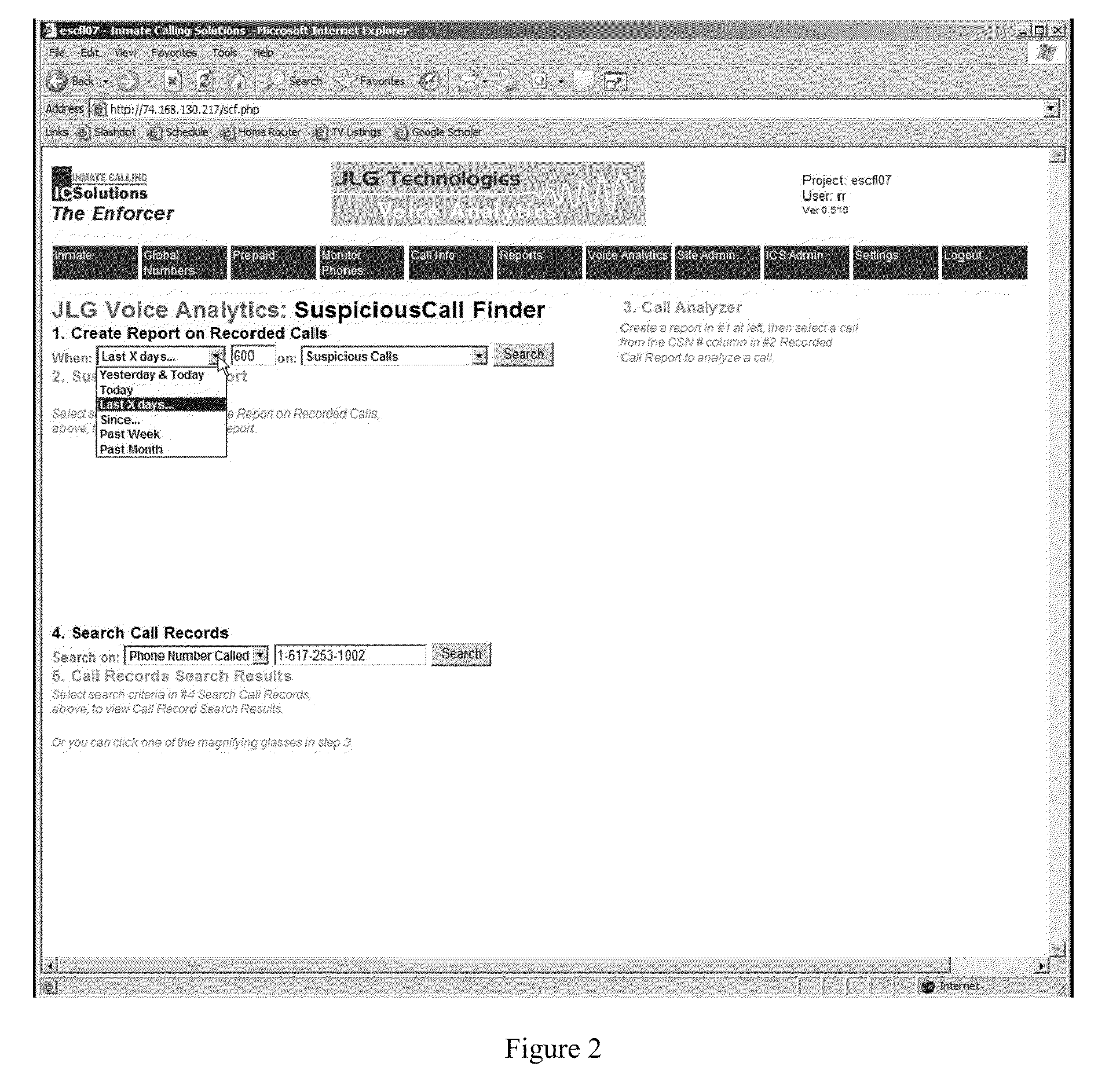Multi-party conversation analyzer & logger
a multi-party conversation and analyzer technology, applied in the field of automatic monitoring of prison phone systems, can solve the problems of system failure to detect clicks, inability to detect phone calls made by inmates, and unreliable detectors at best, so as to increase customer retention, detect frustration on the part, and exacerbate the effect of frustration
- Summary
- Abstract
- Description
- Claims
- Application Information
AI Technical Summary
Benefits of technology
Problems solved by technology
Method used
Image
Examples
Embodiment Construction
[0052]Within this document, the terms “voice print”, “voice signature”, “voice print data”, “voice signature data”, and “voice model” may all be used interchangeably to refer to data derived from processing speech of a given person, where the derived data may be considered indicative of characteristics of the vocal tract of the person speaking. The terms “speaker identification” and “voice identification” may be used interchangeably in this document to refer to the process of identifying which person out of a number of people a particular speech segment comes from. The terms “voice verification” and “speaker verification” are used interchangeably in this document to refer to the process of processing a speech segment and determining the likelihood that that speech segment was spoken by a particular person. The terms “voice recognition” and “speaker recognition” may be used interchangeably within this document to refer to either voice identification or voice verification.
[0053]Within...
PUM
 Login to View More
Login to View More Abstract
Description
Claims
Application Information
 Login to View More
Login to View More - R&D
- Intellectual Property
- Life Sciences
- Materials
- Tech Scout
- Unparalleled Data Quality
- Higher Quality Content
- 60% Fewer Hallucinations
Browse by: Latest US Patents, China's latest patents, Technical Efficacy Thesaurus, Application Domain, Technology Topic, Popular Technical Reports.
© 2025 PatSnap. All rights reserved.Legal|Privacy policy|Modern Slavery Act Transparency Statement|Sitemap|About US| Contact US: help@patsnap.com



